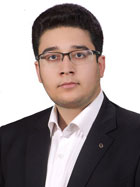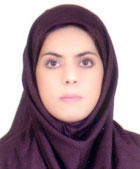Journal of Anthropology & Archaeology, 1(1), pp. 28-40.
Abstract
History of City and Urbanization in Safavid dynasty is one of the most active as well as complicated social category. Distribution and function of each city in accordance with their political, economic, social and cultural role indicated their various functional changes. Besides the political origin of Iranian cities in this era, the economic relations that are depended on urban society, is one of the most important functions of the city as a social phenomenon. In Safavid Iran, this has played a decisive role in the activity of urban social life regarding to an organized definition of commodity, distribution and exchanging system between urban and rural society as well as defining the role of organization in commercial process.This paper is based on historical analyzing method, utilizing historical sources, and social and economic studies on urbanization defining Persian cities economic structure in Safavid era. Farah Abad, Isfahan and Bandar Abbas in north, center and south of Iran are examined to realize the developments which are logical and documentary. These are selected because of their functional nature which was producer, industrial (processor) and exporter cities. The result of this research shows that the founded and developed cities in Safavid Iran, specially expanded on Silk Road in Shah Abbas I’s reign (996-1083H.), played the role of producer, distributer and exporter in North, Center and South of Iran. According to this produce and exchange system, the functional cities in Safavid era are divided in to three types: producer of raw materials, intermediary and processing and finally exporter (port) cities. The analysis of economic relations of cities in Safavid era indicates that the presented kinds in exchanging system concentrated on all aspects of king’s despotic monopolization and possessory exploitation, deep dependence of urban economy on agricultural economy in countryside and finally organizing the system which acted as intermediary and retail in cities.
Full Text: PDF
Taghavi, Abed., Farzin, Saman., & Zoor, Maryam. (2013). Function of Iranian Cities in Safavid Erapolitical Cities or Commercial Cities. Journal of Anthropology & Archaeology, 1(1), pp. 28-40.
1. Ahari, Zahra, (1380), Isfahan School in urban planning: The Linguistic of Elements and Urban spaces, Vocabulary and Grammer, Tehran, Honar University Press
2. Ahari, Zahra, (1385), ChaharBaqe Street in Isfahan, New Concept of Urban space, Seasonal Journal of Golestan –e- Honar, No.5, p.48-59
3. Baker, Patricia, (1385), Islamic Textile, Translated by Mahnaz ShayesteFar, Tehran, The Institution of Studies on Islamic Art
4. Blake, S,1999. Half the World; The Social Architecture of Safavid Isfahan (1590-1722) , Mazda Publishers.
5. Boothby, Richard (1647), A Brief discovery or description of the most famous island of Madagascar or st. Laurence in Asia, London.
6. Briniuli, Jean, (1385), ShahAbbas’s point of view; The Royal Urbanization in Isfahan, Translated by Davod Tabaee, Seasonal Journal of Golestan e Honar, No.5, p.60-71
7. Delavalleh, Pietro, (1370), Safarname-e- Delavalleh, (charter on Iran), Translated by Shoa-e-Din Shafa, Tehran, Elmi va Farhangi Press
8. Figueroa, Don Garsia De Silva, (1363), Safarname -e- Figueroa (Spanish embassodor in ShahAbbas Court), Translated by QolamReza Samiee, Tehran, No Press
9. Godarzi, Hossein, (1387), The Siciological Progress of National Identity in Iran by Focuse on Safavid Era, Tehran, Tamadon-e Irani Press
10. Gube, Hyne, (1365), City of Isfahan, Short Review on Urbanization and Urban Planning in Iran, In MohammadYsef Kiyani, Tehran , Irshad Islami
11. Herbert, Sir,Thomas .1928 , Voyages in Persia(11627-1629), Abridged and edited by sir William foster, London.
12. Honarfar, LotfAllah, (1350), The Treasure of Historical Works of Isfahan, Isfahan, Saqafi Ketabfrooshi
13. Istakhri, Isaac, (1368), Mamalik va Masalik, In Iraj Afshar, Tehran, Elmi va Farhangi Press
14. Jafari, AliAkbar, (1390), The Historical Sociology of The Location and Function of Religious Minority In Safavid Isfahan, (case study, Armenian of Jolfa in Safavid Isfahan), Seasonal Journal of Pajoheshnam-e- Tarikh-e- Ejtemaee va Eqtesadi, No.1, p.1-23
15. Kampfer, Anglebirt, (1363), Safarname, Translated by Keykavoos Jahandari, Tehran, Kharazmi Press
16. Karimian, Hasan, (1384), The Nessecity of Utilizing New Theories on Analysis of Spatial Structure in Old Texture, Journal of Faculty of Literature and The Humanities, Tehran University, vol.2. No.173, p.111-121
17. Lakhart, Laurence, (1383), Fallig of Safavid Dynasty, Translated by Ismaeel DolatShahi, Tehran, Elmi va Farhangi Press
18. Le Bruyn , Cornelius ,(1737), Travels into Moscovy, Persia and Part of The East Indies, 2 Vols , London.
19. Majedi, Hamid and Fereshteh Ahmadi, (1387), The Role of Madies on Organizing of Spatial construction of Isfahan, Seasonal Journal Hoviat-e Shahr , No3, p.39-50
20. Mokhlesi, MohammadAli, (1379), The Bridges in Iranian Architecture In MohammadYsef Kiyani, Samt Press, p.198-222
21. Monajem Yazdi, Molla Jalal al Din, (1360), Tarikh e Abbasi (Rozname Molla Jalal), In SeiAllah Vahidniya, Tehran, Vahid Press
22. Moqadasi, AbuAbd-Allah Mohammad, (1362), Ahsan Al Taqasim Fi Marefatel Aqalim, In AliNaqi Monzavi, Tehran, Moalefan va Motarjeman e Iran Company
23. Navaee, AbbasQoli and Abd al Hossein QafariFard, (1381), The History of political,Social, Economic and Cultural Changes of Iran in Safavid Era, Tehran, Samt Press
24. Navidi, Darush, (1386), Social- Economical Changes in Safavid Iran; Sixteen and Seveneen A.D, Translated by Hashem AqaJari, Tehran, Ney Press
25. Newberie, John (1905), Two Voyages of Master J. N. one in to The Holy
26. Nikitin, Afanasy (1960), Voyages beyond Three Seas, Moskow.
27. Pirniya, Mohammad Karim, (1387), Methodology of Iranian Aarchitecture, Tehran, Sorush e Danesh press
28. Pirniya, Mohammad Karim, (1390), An Introduction of Islamic Aarchitecture in Iran, Buildings of Inner-urban and Outer-urban, In Engineer QolamHossein Meemariyan, Tehran, Sorush e Danesh press
29. Rabino, Hiasin Luise, (1383), Safarname-e-Mazandaran va IstarAbad, Translated by GolamAli Vahid Mazandarani, Tehran, Elmi va Farhangi Press
30. Roimer,H.R, (1384), Safavids Arising in History of Iran: Safavid Era, A Research in Cambridge University, Translated by Yaqoob Ajand, Tehran, Jami Press
31. Savaqeb, Jahanbakhsh, (1370), The Importance of Silk in in Safavid Era, The M.A Thesis, History Department, Faculty of Literature and The Humanities, Tehran University, Unpublished
32. Savaqeb, Jahanbakhsh, (1385), ShahAbbas I’s Policies onTrade Flourish in Iran, Seasonal Journal of Pajoheshname-e- Tarikh, No.2, p.41-60
33. Sefat Gol, Mansoor, (1381), The Construction of religious Thought and Organization Safavid Iran; The history of religious Changes from Tenth to twelfth Centuries H. in Iran ,Tehran, Institution of Khadamat e Farhangi Rasa
34. Shafaqi, Siroos, (1379), The Principles of Urban Planning in Safavid Isfahan, Journal of Farhang-e Isfahan, No.15, p.35-51
35. Sharden,jean, (1335), Siyahat name-e- Sharden, Translated by Mohammad Abbasi, Tehran, AmirKabir Press
36. Siuri, Rajer, (1384), Safavid Iran, Translated by Kmbiz Azizi, Tehran, Markaz Press
37. Steensgaard (1974), Niles, The Asian Trade Revolution, The University of Chicago Press.
38. Taqavi, Abed,(1388), A Reviwe on The Trade Changes of Carpet Industry in Safavid Era, Seasonal Journal of Goljam, No.12, p.55-68
39. Tavernieh, Jean Babtist, (1363), Safarname -e-Tavernieh, Translated by AbuTorab Noori, In Hamid Shirani, Isfahan, Taeed Ketabfrooshi
40. Teixiera, Pedro (1970), The Travel of Pedro Teixiera, Translated by Walter, de Gray Birch, New York.
41. Thevont, J. de. (1686) The Travels Monsieur de Thevenot in to The Levant,
42. Torkaman, Iskandar Beyg-e-Monshi, (1377), Tarikh-e-Alamara -e-Abbasi, In AliAsqar Revani, vol.2, Tehran, Donya-e-Ketab Press
43. Uroj beyk, Bayat, (1338), Iranian Dune Juan, Translated by Maasud Rajab Niya, Tehran, Bina
44. Vosooghi, MohammadBaqer, (1384), History of Persian Gulf and Its Neighbours, Tehran, Samt Press
45. Vosooghi, MohammadBaqer, (1388), Birth of a Port in Safavid Era, A Review on The Organizing and Founding of Bandar e Abbasi, Seasonal Journal of Pajooheshhaye Olume Tarikhi, vol.1, No.1, p.109-125
46. yusefifar, Shahram, (1385), A Research on Historical Elements and Characteristics of Concept of Urban in Iran Middle Centuries, Seasonal Journal of Farhang, vol.60, No.1, p.262-304
47. yusefifar, Shahram, (1390), Urban and Rural in The History of Iran Middle Centuries.

Abed Taghaviis aAssistant professor of Archaeology at University of Mazandaran. His career spans both Iranian Urbanism and the Archaeology. At the UniversityofSistan&Baluchitan he concurrently earned an M.A. in Archaeology and an M.S. in Islamic Archaeology, and received a Ph.D. in Islamic Archaeology2010.
He is now a member of scientific board of faculty art and architecture and department of archaeology at University of Mazandaran. He has published s a book and several original articles in international scientific journal about historical sociology, history, urbanism and archaeology in Islamic period.

Saman Farzin
Ph.D Candidate at Archaeology in University of Mazandaran, Iran
Email: [email protected]

Maryam Zour
Ph.D Candidate at Archaeology in University of TarbiatModares, Tehran, Iran.
Email: [email protected]
Corresponding Author
Contact Number: 00989125439231
Address: Mazandaran Province, Babolsar City, Paradis Complex (University of Mazandaran) ,
Faculty of Art & Architecture, Department of Archaeology.
Email: [email protected] / [email protected]
Browse Journals
Journal Policies
Information
Useful Links
- Call for Papers
- Submit Your Paper
- Publish in Your Native Language
- Subscribe the Journal
- Frequently Asked Questions
- Contact the Executive Editor
- Recommend this Journal to Librarian
- View the Current Issue
- View the Previous Issues
- Recommend this Journal to Friends
- Recommend a Special Issue
- Comment on the Journal
- Publish the Conference Proceedings
Latest Activities
Resources
Visiting Status
| 209 | |
| |
369 |
| |
5476 |
| |
8133 |
| 929669 | |
| 8 |
 The Brooklyn Research and Publishing Institute
The Brooklyn Research and Publishing Institute